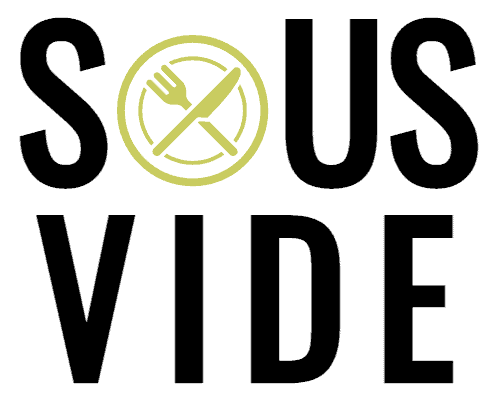Sous Vide vs Poaching – how are the similar? How are they different? They may seem like very similar methods of cooking, after all, they both cook food by poaching it in warm or hot liquid. But that’s where the similarity ends.
Sous Vide and Poaching are distinctly different cooking techniques that take a completely different approach to preparing a meal. Eggs are often the first thing when people think of poaching, but there’s so much more to it too.
In this article, I discuss just what the similarities and differences between Sous Vide vs Poaching.
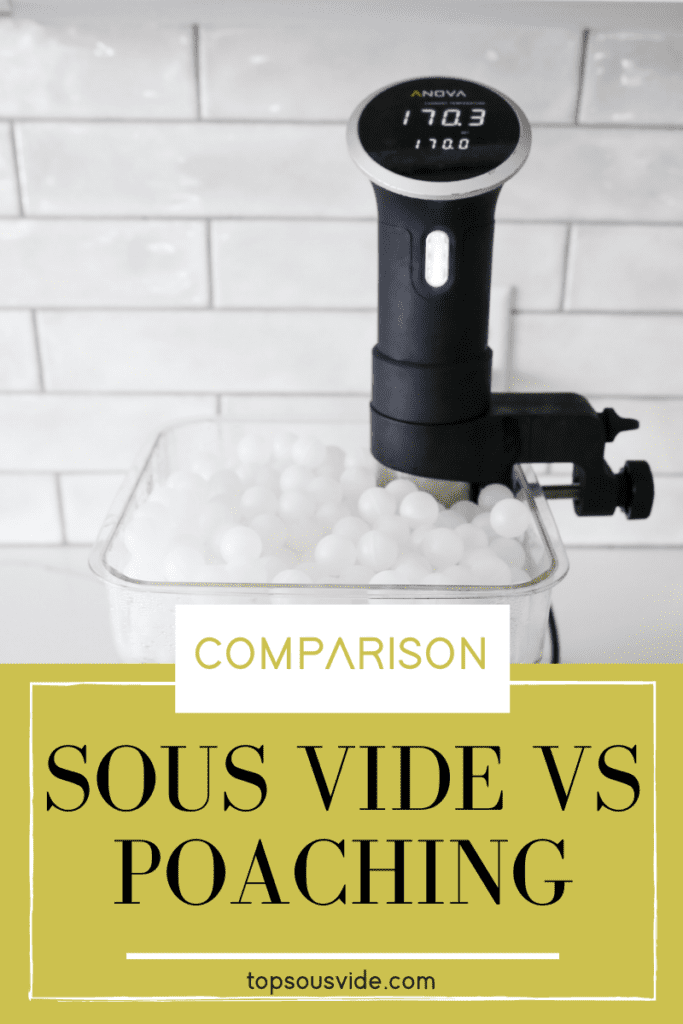
Table of Contents
How Does Poaching Work?
Poaching is the process of slowly and gently cooking food in a simmering liquid. Do note that the liquid is not boiling.
The popularity of Poaching began in the late 1800s when a renowned American chef from New York City, Charles Ranhofer, published his cookbook, “The Epicurean.”
Although water is the most common, other frequently used liquids include:
- Milk
- Wine
- Stock
- Vinegar
These are just examples of what can be used, this flexibility makes poaching an extremely versatile cooking method.
Poaching works best with delicate foods including eggs, fruit, and fish.
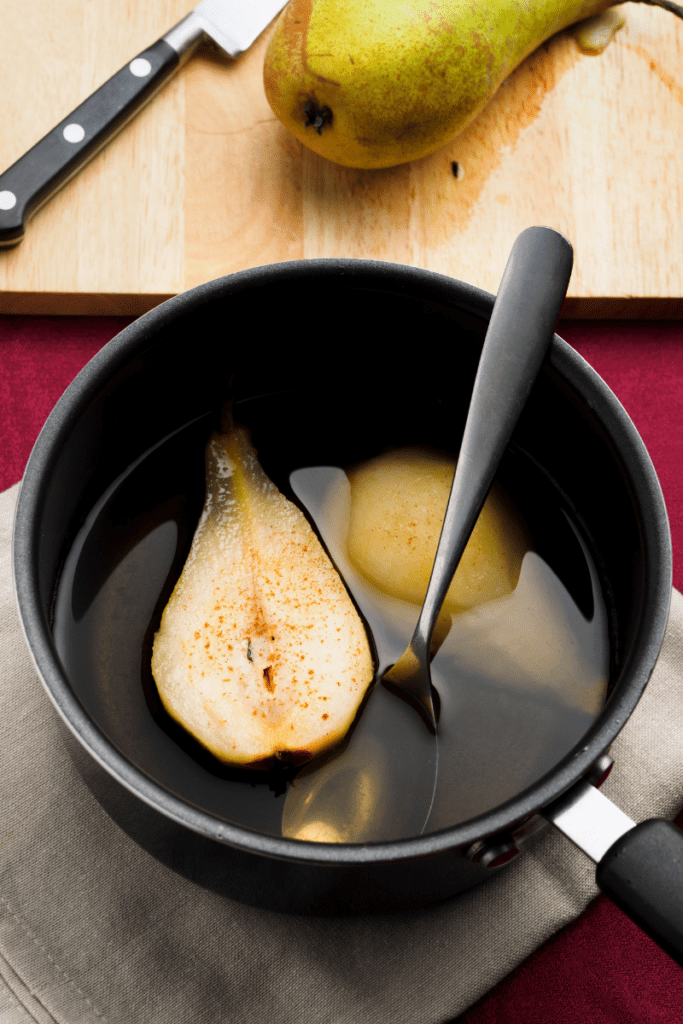
One of my favorites is smoked fish poached in milk with a bay leaf thrown in for some added flavor. Serve it with a cheese sauce made from the poaching milk, absolutely delicious.
- Related Articles: How to Sous Vide Eggs – Hard Boiled, Soft Boiled, Poached
When food is poached, it retains much of the moistness that is lost in other methods. This is down to the gentle approach which lets the protein in the food retain its moisture.
By comparison, boiling food causes the protein molecules to “seize up,” which forces the moisture from the food.
As mentioned, the poaching liquid can be as simple or as exotic as you choose. Even oils can be used as a poaching medium. Simple yet elegant desserts can be made by poaching fruits like apples and pears in cider or champagne.
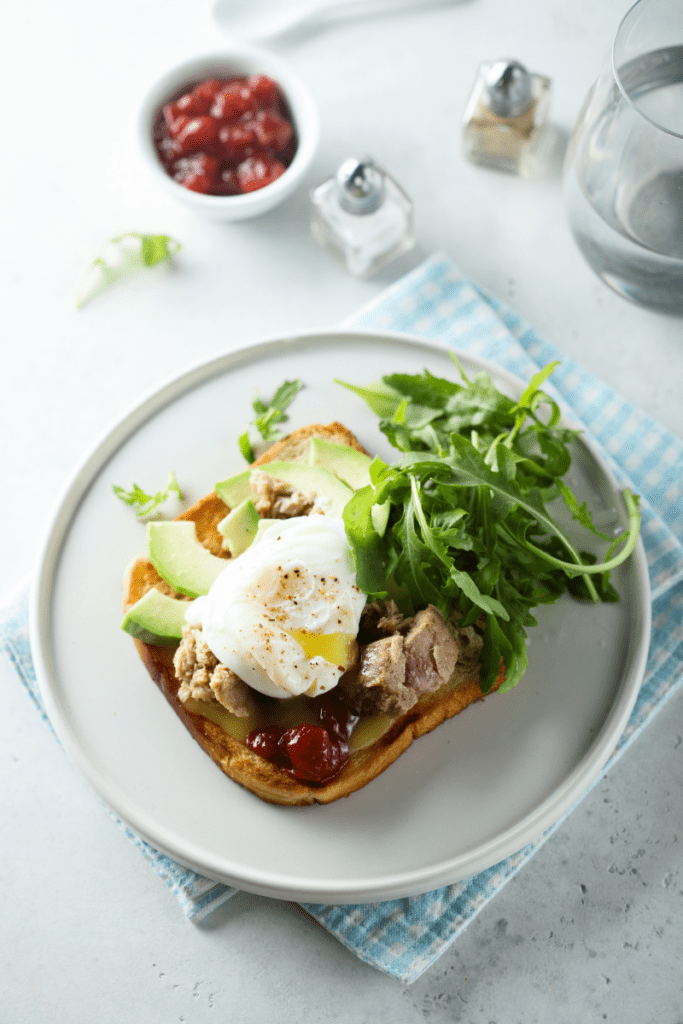
The Benefits of Poaching
- Simple – All you need to poach is a pan or pot, and a stove. Poaching allows you to prepare great meals such as chicken, fish, and fruits, with nothing more than a pan and some imagination.
- Flavor – Poaching allows the flavor of the food to take center stage. The delicate nature of the cooking process that keeps the food moist also retains all the wonderful natural flavors of the ingredients.
- Healthy – Poaching is one of the healthiest ways to cook food, it greatly reduces the amount of fats and oils compared to grilling or frying.
- Fast – Poaching doesn’t take much time to either prepare or cook. My smoked fish favorite can be on the table in less than twenty minutes.
The Cons of Poaching
- Learning Curve – Poaching can be tricky to master. Getting the temperature and cooking time right can take practice. Leave it too long and food can taste bland, too hot and it can be tough.
- Can look unappetizing – Because food is cooked slowly, it can look a bit flat and uniform in color. While, this might make some foods look appealing, foods like chicken breast, although tasty, can look bland. And as they say, the first bite you take is with the eyes.
- Can be Bland – Okay, so I’ve already noted that poached food can be delicious. But for some people that charred or oven-roasted flavor makes a meal, by its very nature poaching won’t achieve this.
How does Sous Vide Work?
Sous vide is a popular cooking technique that many home and professional chefs alike use in their kitchens and fine-dining restaurants.
Sous Vide means “under vacuum” in French. This cooking method involves sealing the ingredients in a vacuum-sealed bag in a bath of warm cooking liquid. In sous vide, it is always water that is used. The food is sealed in a bag therefore using more exotic liquids is pointless.
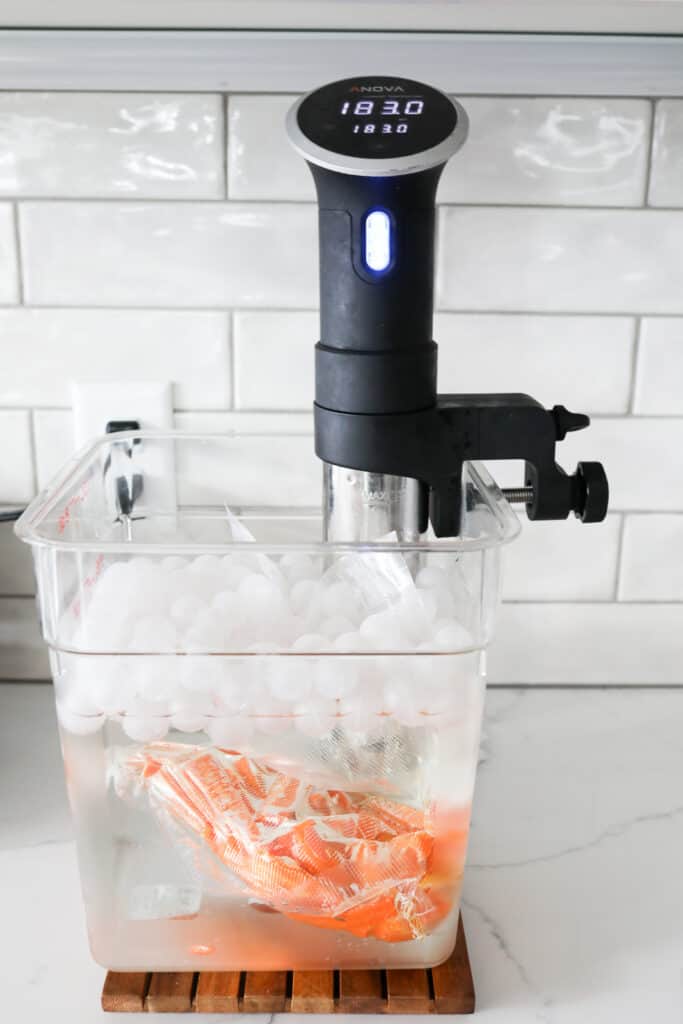
Sous Vide works by precisely controlling the temperature of the water and cooking the food over a long period.
Cooking times can be as short as 45 minutes but usually are far longer, sometimes up to 8 hrs or more. The cooking time also works for lots of food at one time too, as the water in a sous vide container is one temperature, so all the food is cooked at the same temperature.
While many types of food including fish, vegetables, and chicken can be poached or cooked Sous Vide with equal success, Sous Vide can also handle meats like steaks and tenderloin with ease.
Precise temperature control is required with sous vide and you’ll need special equipment like a sous vide cooker, container, and vacuum sealer.
There are also precision ovens and appliances like the Anova Precision Oven that’s now able to cook Sous Vide.
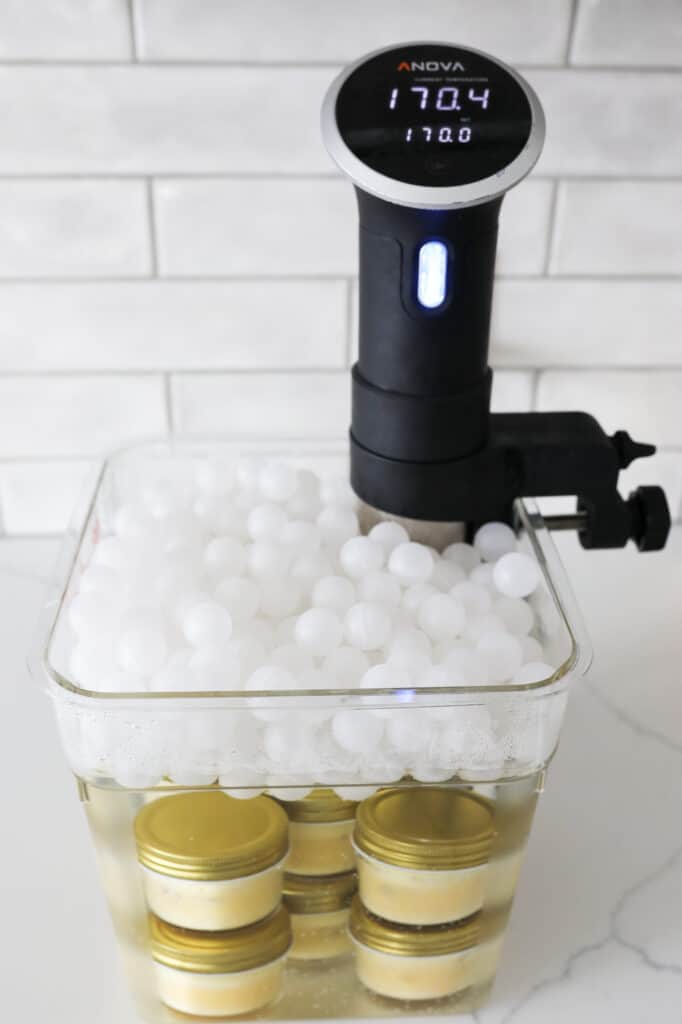
- Related Article: Anova Precision Oven Full Review
The Benefits of Sous Vide
- Moist and Flavorsome – Like poaching on steroids, the same rules apply as far as flavor and moisture retention goes. The plus with Sous Vide is all the nutrients, moisture, and flavor are also locked in during the entire process.
- Economic – Although cooking times are long due to the lower water temperatures (usually between 120° F and 160° F), it is an energy-saving method of cooking.
- Healthy – Reduced fat and oil content in the cooking process and all those locked-in nutrients adds up to a healthy meal.
- Convenient – With Sous Vide, it is entirely possible to start your food cooking in the morning and have it ready when you return home from work. This also makes it perfect for hassle-free dinner parties.
- Batch Cooking – You can cook multiple pieces of meat at one time as some sous vide cookers can heat up large sous vide containers.
See more reasons why sous vide is healthy.
The Cons of Sous Vide
- Can Be Tricky – Timings and temperatures are essential to get the correct results. Also, because all the flavors are locked-in, care is needed when adding ingredients such as garlic.
- Specialist Equipment Needed – Unlike Poaching which can be done in pots already in your kitchen, with Sous Vide you will need to purchase at least a sous vide machine to heat the water.
Similarities and Differences
Sous Vide and Poaching Similarities
Both these methods use hot (not boiling) liquids to prepare food, this is the most obvious similarity between the methods.
Although Sous Vide can be slower than poaching, both methods rely on lower temperatures and longer coming times to prepare the food.
The results are similar as well, both methods produce meals that are moist, healthy, and crammed full of flavor. Both disciplines can also be used on a wide variety of foods including chicken, vegetables, fish, and fruit.
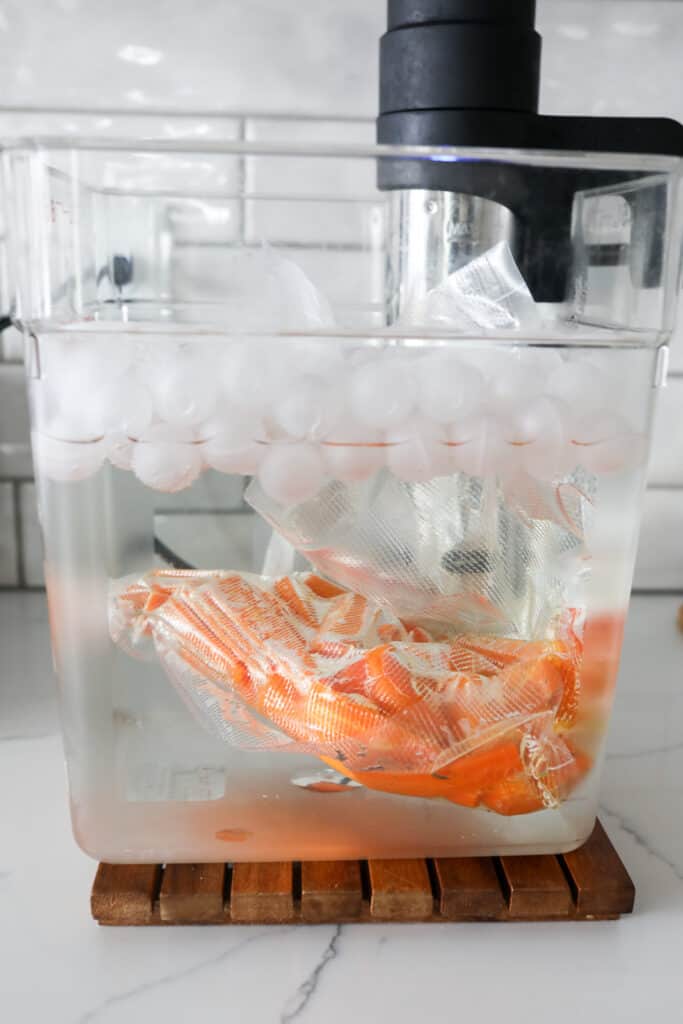
Sous Vide and Poaching Differences
The major differences are times, temperatures, and how the food is cooked in liquid. Sous Vide is cooked longer and at lower temperatures with the food always kept separate from the water.
That allows sous vide to be more versatile in regard to the foods it can cook. I’ve cooked steak using my sous vide many times, but this isn’t something I would ever consider with poaching.
While food can be poached in various liquids, sous vide can only be in water.
Another difference is that food isn’t sealed when poached, but food is always in a bag when sous vide cooking so the food doesn’t come in direct contact with water.
When it comes to poaching, the food isn’t always submerged in the water either. Sous vide cooking requires that the food in the sealed bags are always submerged to allow for even cooking throughout the food. With poaching, you could be spooning the hot liquid over the food as it cooks.
With poaching, you have the versatility to add flavor to your meal by incorporating ingredients into the poaching liquid. It is also a better option when time is short, due to the reduced cooking times.
Finally, you likely already have all the equipment needed to get poaching, but with Sous Vide, a sous vide machine is required.
Final Thoughts on Sous Vide vs Poaching
Sous Vide is much more than just glorified poaching, but that is not to detract from what poaching offers the home chef. Both these methods are a fantastic way of preparing healthy, delicious, and nutritious meals.
There are strong points and weak points for both when it comes to different kinds of food. I have different thoughts on different foods when it comes to choosing between sous vide cooking vs poaching.
For example, Sous Vide doesn’t match my poached smoked fish in cheese sauce, and poaching will never produce that melt-in-the-mouth steak.
These days we are so much more health-conscious and careful about what we eat, and how we prepare it. That to me is the greatest benefit that both these methods bring to the table.
For other comparisons of the sous vide method to other cooking styles, choose one of these articles:
